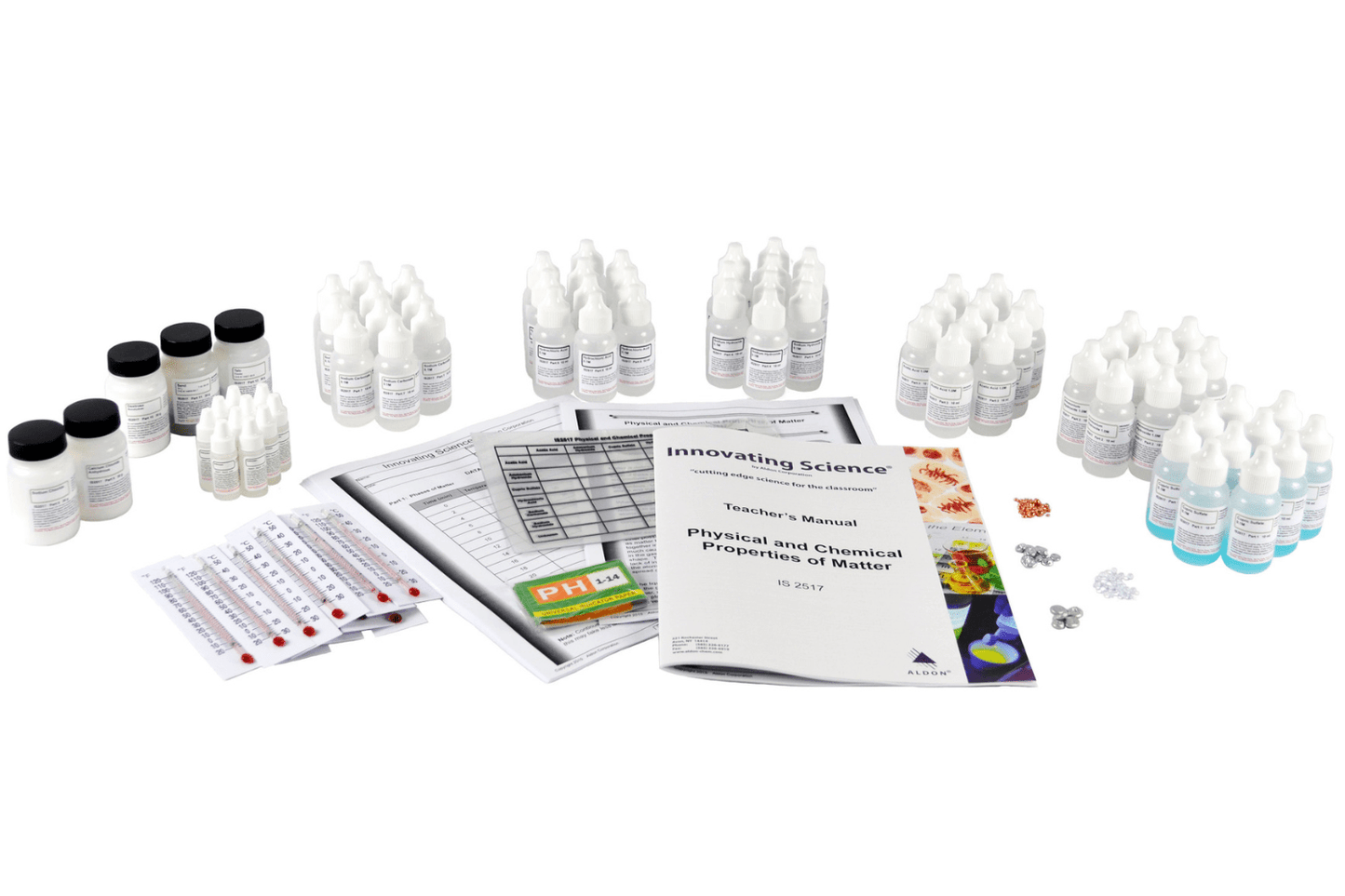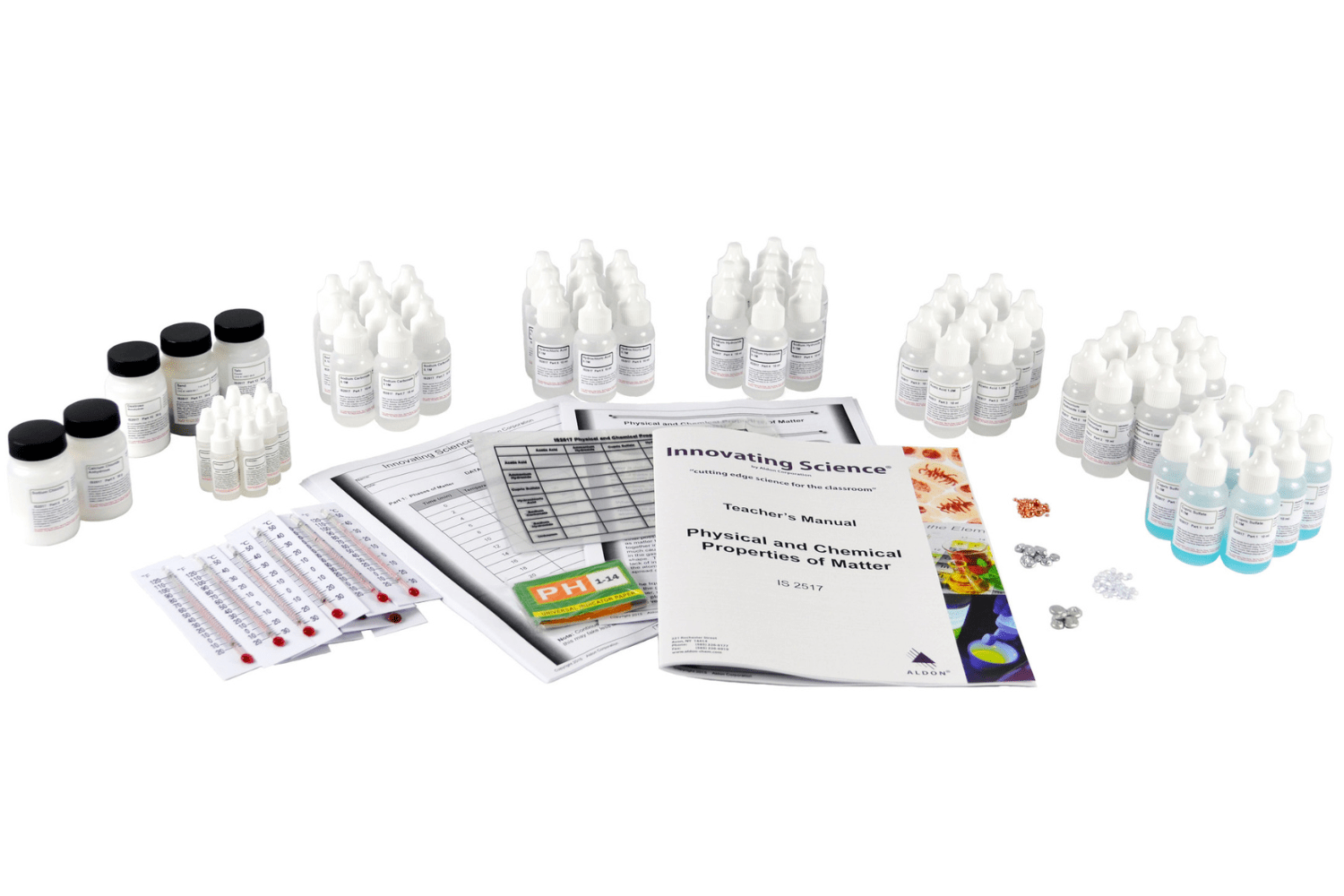Additional Details
A guided inquiry into the properties of matter, this lab kit will conduct learners through procedures to examine the phase shift of matter. The interaction between molecules is highlighted as the activity shows the strongest interactivity with solids and the weakest interactivity with gas.
Students will calculate the density of multiple samples as well as dissolve multiple solids in water. Finally, students will engage in a series of chemical reactions with four solutions. These activities will help students learn about the nature of matter and the different properties that describe everything around us.
Products being sold are not toys. They are for Educational / Laboratory use only. They are not for use by children 12 and under.
What’s Included
10 x 10mL Cupric Sulfate, 0.1M
10 x 10mL Ammonium Hydroxide, 1.0N
10 x 10mL Acetic Acid, 1.0N
10 x 10mL Sodium Hydroxide, 0.1N
10 x 10mL Hydrochloric Acid, 0.1N
10 x 3mL Unknown Solution
10 x 10mL Sodium Carbonate, 0.1N
30g Sodium Chloride
30g Calcium Chloride
30g Dextrose
30g Sand
30g Talc Powder
10 x 5g Zinc Sample
10 x 5g Copper Sample
10 x 2g Aluminum Sample
10 x 2g Glass Sample
1 pack pH Strips
10 Pre-printed Acetate Sheets
10 Thermometers
Standards
Disciplinary Core Ideas: PS1.A; PS1.B
Performance Expectations: MS-PS1-2; HS-PS1-1; HS-PS1-3
Cross Cutting Concepts: Patterns
Engineering Practices: Analyzing and Interpreting Data; Developing and Using Models; Planning and Carrying Out Investigations



